Being and Becoming: Constructing Singapore and Singaporeans
Associate Research Fellow Chan Wen Ling argues that society needs to move towards a more inclusive non-ethnic understanding of a Singaporean Singapore in order to thrive in a globalised world.
####

With over four decades of economic progress and development, Singapore’s population today stands at 5.1 million, compared to only two million in 1970, with citizens making up 64% or 3.2 million of the population and the remaining 36% consisting of foreigners and permanent residents.1 Singapore has certainly come a long way from being what Chua Beng Huat (1995, p. 6) termed a “reluctant nation”. The city-state has witnessed “economic transformation from a labour-intensive import-substitution focus to a higher-skilled, high-technology export-oriented industrialisation” (Low, 2002, pp. 421–422). Currently competing in the new globalised knowledge-based economy (KBE), it Is clear to the government that to be a successful KBE, intellectual capital that comes with foreign talent is essential, hence “Singapore must become a cosmopolitan, global city, an open society where people from many lands can feel at home”.2
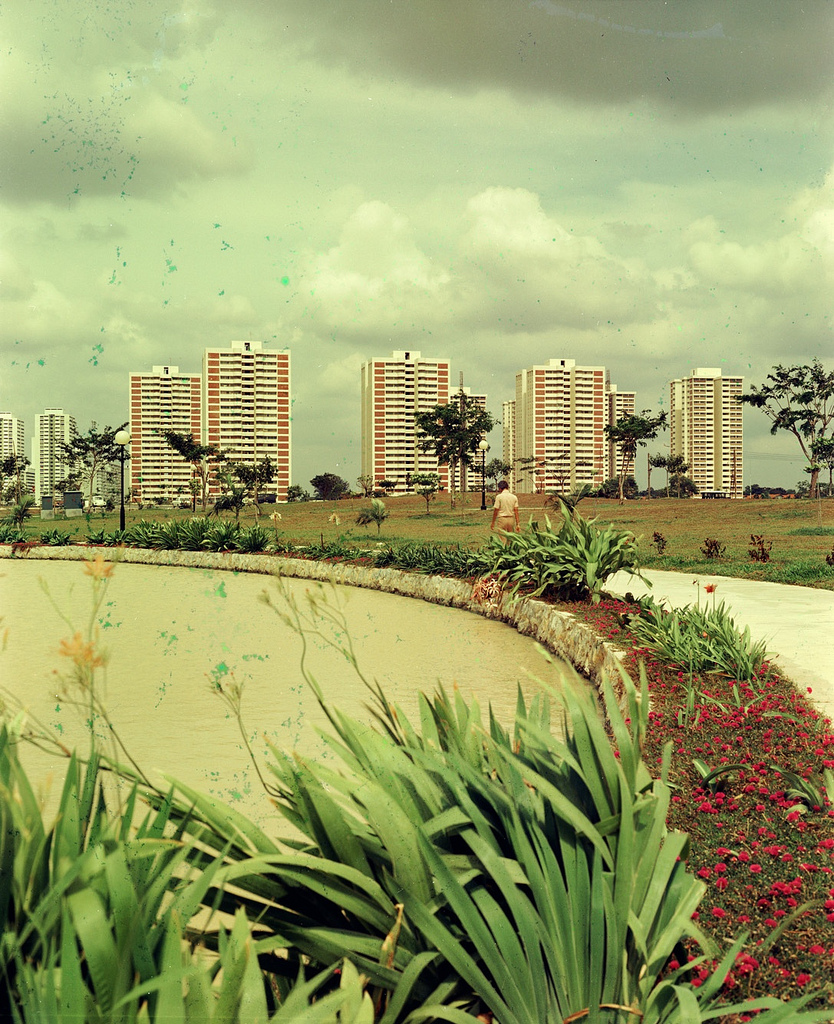
These socioeconomic changes are largely brought on by globalisation and the government’s response in dealing with as well as harnessing the forces of globalisation. According to Brenda Yeoh (2004. p. 2435), “[t]he insistence on ‘cosmopolising’ Singapore – both the city as a place and its people – is driven primarily by the belief that this is an essential strategy if the city-state is to succeed in its globalising aspirations”. She describes this “state-driven. state engineered, neo-liberal globalisation project” as having two related characteristics: (1) “to re-engineer Singapore as a place for cosmopolitans, an idea which is interpreted to mean globalisation, urbanisation, industrialisation, modernity, efficiency, accessibility, advanced technology and high-speed connections to all parts of the globe”, in order to attract and retain foreign talent; and (2) the need to cosmopolise the people as well. Here, “[c]osmopolitanism is conceived as a quality of mind which allows Singaporeans to navigate successfully in a globalising world… Cosmopolitanism is also conceived as an ethos which increases Singaporeans’ comfort level with foreign talent in Singapore itself” (Yeoh, 2004, p. 2436).3
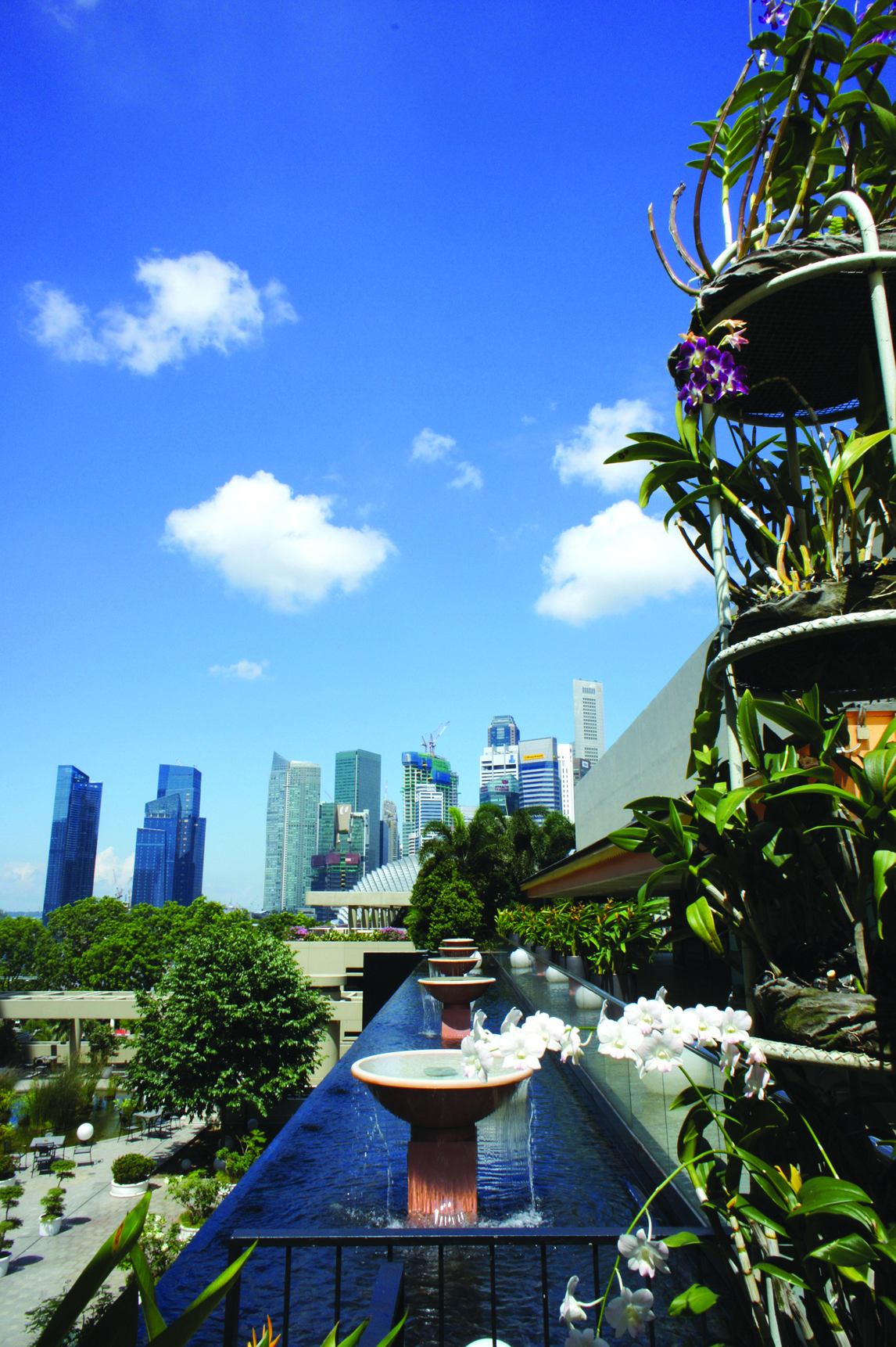
The state has been successful in the first aspect of its globalisation project, namely in establishing Singapore as a cosmopolitan global city.4 However, whether the people subscribe to the whole cosmopolitan identity package is questionable. Arguably, one of the key reasons contention exists between citizens and immigrants in Singapore today is because citizens do not identify with a cosmopolitan identity (Yeoh, 2004). New challenges brought on by globalisation, like the growing discomfort felt by the citizenry over the increase in foreigner presence and the competition for resources that come with it (Koh, 2003; Yap, 1999; Yeoh & Huang, 2004), has seen the citizenry gradually turn to an introverted form of nationalism, which is detrimental to any plans to globalise or cosmopolise the city-state.5
Globalisation and nationalism are a contradiction, yet at the same time interdependent; the challenge is for Singapore to harmonise the two. As Stein Tonnesson and Hans Antlov (1996, p. 2) point out, “[i]n order to be successful in the new global marketplace, it is important for a state to develop and maintain a collective ‘we-feeling’ among its citizens, and a sense that the state belongs to them”. Essentially, a state’s authority diminishes when its citizens do not identify with it, and more importantly, “territories with little effective authority cannot attract investments and generate growth” (ibid). Tonnesson and Antlov highlight the paradox of today’s world, where “globalization undermines the sovereignty of each individual state while at the same time making it increasingly important for a state, in order to be competitive in the global market, to obtain the strong dedication from its citizens” (ibid).
Harvard professor Robert Putnam’s advice to nation-states like Singapore, faced with the abovementioned globalisation and nationalism dilemma, is to continue building social capital.6 This article argues that to increase social capital there needs to be a change towards a more inclusive non-ethnic understanding of a Singaporean Singapore.7 This Singaporean Singapore would then allow for the development of a natural (as opposed to a state-imposed and difficult to establish and sustain) cosmopolitan Singaporean identity, which is needed to help Singaporeans deal with the new globalisation issues that accompany changing times.
Sharper distinctions between the privileges enjoyed by citizens and foreigners in terms of healthcare, housing and education may appease the citizenry who feel that foreigners are given preferential treatment by the government, as well as entice targeted foreign talent to take up citizenship. However, this is only a short-term solution. When foreigners join the ranks of new citizens to stake a claim on these citizen benefits, there will be an inevitable divide within the citizenry, with a section of them feeling that as more people share the benefits there would be less to go around, giving rise to the difficult question of “how many years must pass before one is no longer labelled a new citizen?” This problem can be avoided if a more inclusive strategy to resolve the citizen-immigrant contention is chosen over an exclusive, divisive one.
To meaningfully explore the notion of national identity and what it means for Singapore, this article is divided into three parts. In part one, the idea of national identity in the Singapore context and an overview of how Singapore’s national identity has developed since the nation’s inception is discussed. As such, the first section will illustrate three distinct stages that mark the development of Singapore’s national identity: (1) creating the “local” in order to successfully engage in the “global”; (2) protecting the “local“ against the “global”; and (3) embracing the “global” while staying “local”. Following from this, the impact of globalisation on nationalism is analysed in the second section to understand why the government’s current globalisalion and nation-building projects are problematic. Of note here will be two elements of the state’s interlinked globalisation and nation-building projects: the national myth of success from crises; and the Chinese-Malay-Indian-Others (CMIO) categorisation. The final section examines how the Singapore national identity can be refined to equip the generations of Singaporeans to come.
It argues that Singapore’s ethnically and culturally diverse citizens would benefit from a more inclusive, cosmopolitan, Singaporean Singapore identity that would produce the social capital needed to help them adapt to the challenges of globalisation, for the long-term continued success of the country.
Understanding National Identity in the Singapore Context
Following Lily Kong (1999, p. 571), national identity is defined as a “national consciousness in the sense of a people possessing a shared image of the nation”, in addition to encompassing “the idea that this people identify with and feel a sense of belonging to the ‘nation’”.
As Terence Chong (2010a, p. 1) posits, “Singapore’s oscillation between its nation-state and global city habitus, together with their conflicting demands, has thus far made an authentic national identity rather elusive”. He goes on to argue that those looking for an authentic Singapore national identity would first need to explore the politics behind the state-produced national imaginary and values (Chong, 2010a).
It is important to note at this juncture that Singapore’s creation of a compelling national myth was hampered by a few key contextual issues: the sudden separation from Malaysia; an immigrant population marked by ethnic, linguistic and cultural differences; tensions with other newly formed nation-states within its immediate vicinity; and as a young nation, a short historical trajectory of which to draw on for the creation of a strong mythology needed to bring about a cohesive social foundation (Kluver & Weber, 2003).
Nationalism and national identity in Singapore was aimed at complementing the govemment’s strategy of globalising the country’s economy, and “did not spring from any primal or natural yearning but from a developmental need. Because the idea of national survival was so closely linked to economic survival, a coherent nation was… vital in forming a cohesive workforce compliant enough for market exploitation” (Chong, 2010a, p. 8).
Looking at national identity in Singapore since independence, several iterations indicate three stages in the development of the national identity in Singapore (see Velayutham, 2007; Chua, 1995; Chong, 2010a; Quah, 2000):
(1) At independence, a politically and socially stable environment was necessary in order to pursue the globalising of Singapore’s economy. This led to the fostering of a Singapore national identity with the CMIO framework as its core, aimed at uniting the disparate heterogeneous migrant communities that made up Singapore’s population.
(2) The early 1980s saw a search for a national ideology, which would later be known as “Shared Values”,8 to counter the perceived negative impact of globalisation, i.e., Westernisation, and individualism as opposed to communitarianism. National identity during that time was fashioned after Asian values and cultural traditions, that is, Chinese, Malay, and Indian values and traditions.
(3) With structural changes emerging in the global economy in the 1990s which saw regional hubs, global cities and interconnected economies increasingly becoming the norm, along with the Asian Financial Crisis, the Singapore government concluded that the city-state had to go global while staying local. National identity was thus redefined to include cosmopolitanism while maintaining the CMIO identities in order to anchor the cosmopolitan Singaporean to the nation.9
The people were not entirely apathetic with regards to the nation-building processes fed to them by the government. Through international exposure, shared experiences and contact with other ethnic groups within Singapore, the people themselves developed unique elements they considered markers of Singapore’s national identity. For example, the types of different ethnic-based cuisine enjoyed by most Singaporeans, and vernacular identities like “Mat”, “Minah”, “Ah Beng” and “Ah Lian”, along with Singlish, the unique local language with a mixture of English, Malay and Chinese dialects. However, these things, which some might argue are the basis of a true Singaporean identity, “are paradoxically perceived by the state as threatening to Singapore’s engagement with the global and are actively discouraged” (Velayutham, 2007, pp. 152–153).10 On the other hand, these familiar non-state-sanctioned identities are increasingly used by Singaporeans to “reaffirm local identity in the face of increased globalisation and the influx of the foreigners”, and as the government pushes harder for a “cosmopolitan-oriented national identity for its economic interests”, we see “Singlish and vernacular identities become [more attractive] as sites for resistance” (Chong, 2010b, pp. 515–516).
Going global may have been the aim of the country since independence. However, the emerging globalisation challenges of today see two projects of the state backfiring on each other, namely globalisation and nation-building. It now becomes important to think about how demands of globalisation and nationalism pressures can be reconciled.
Globalisation and the Need to Think Beyond Nationalism
Having traced the three stages of development of Singapore’s national identity, it is revealed that in order to maintain political and social stability, which are essential for economic growth and the globalisation aspirations of the city-state, the government chose to unite and mobilise the nation using (1) the national myth of success from crises and (2) a particularist multiracial national identity that restricted the space for defining differences and accepting any other identities, besides the official, neatly categorised CMIO identities. These two aspects of the state’s interrelated globalisation and nation-building projects are problematic.
A national identity based on the “national myth of forging economic progress and success out of crises, relying primarily on globalizing strategies, such as mandating the use of English, focusing on economic growth through international trade and multinational corporations, and stressing a global orientation rather than a local identity” has certainly contributed to Singapore’s material success story (Kluver & Weber, 2003, p. 380). However, such a national myth has to a certain extent weakened social bonds necessary for establishing and maintaining patriotism, as “the values of pragmatism, entrepreneurship and opportunism” that economic progress demands inevitably undermine national identity (Kluver & Weber, 2003, p. 378).
Yeoh (2004, pp. 2437–2438) aptly described state-engineered nationalism in Singapore when she noted that the state formulated CMIO racial categories, which were the “official” races to be regarded as separate yet equal, “encouraged acceptance and tolerance among the four racially bounded ‘communities’ and at the same time dictated the basic terms of reference in the ways in which ‘race’ and ‘nation’ may be intertwined”. This CMIO framework provided “fixed, limiting grids in which the discourse of the ‘multicultural nation’ was allowed to unfold and restricted the extension of the discourse to include other members of the fluid, fragmenting ethnoscape typical of globalising cities” (ibid).
As the state’s vision for Singapore is to be a cosmopolitan global city in the same league as first-world developed countries competing for global talent, there is a necessity to rethink the state’s strategy of using nationalism, as Singapore knows it (one that is anchored by the CMIO framework of defining and differentiating oneself from others), to maintain national cohesion in the face of the challenges of globalisation.
Another reason for the need to think beyond the current form of nationalism in Singapore, that has CMIO as its core pillar, is linked to the fact that even with the exponential increase of foreigners over the years, the composition of the CMIO has remained more or less the same since independence. As then Deputy Prime Minister Wong Kan Seng, who heads the newly formed National Population and Talent Division under the Prime Minister’s Office stated: “In managing our population, we will always be guided by the need to preserve a strong citizen core, and to maintain stability in our ethnic mix.”11 Assuming that these CMIO identities have also remained unchanged is problematic. The foreigners now entering and even integrating into Singapore society may be ethnically similar, but the other experiences and identities they bring along with them are not. As Yeoh (2004, p. 2442) explains, the term “race”, as Singapore becomes the temporary or even permanent home of foreigners, “has become inflected by differences in ‘nationality’, ‘history’ and ‘culture’, rendering the politics of sameness and differences within each ‘race’ more complex”.
Enhancing the Singapore National Identity
Besides using the term “cosmopolis” and other related phrases such as “cosmopolitan city” or “cosmopolitan society” as “a way of envisioning cultural vibrancy and creativity for the city, the idea of Singaporeans-as-‘cosmopolitans’ was made prominent in counterpoint to Singaporean-as-‘heartlanders’, oppositional terms popularised by Prime Minister Goh Chok Tong in his 1999 National Day Rally Speech” (Yeoh, 2004, p. 2434). The heartlander-cosmopolitan debate brings to attention not just a worrying “class divide between the well-educated, privileged, globally-mobile elite, on the one hand, and the working class majority, on the other” (Tan, 2008, p. 189), but also “differential adaptability and receptivity to globalization” (Tan, 2003, p. 758).
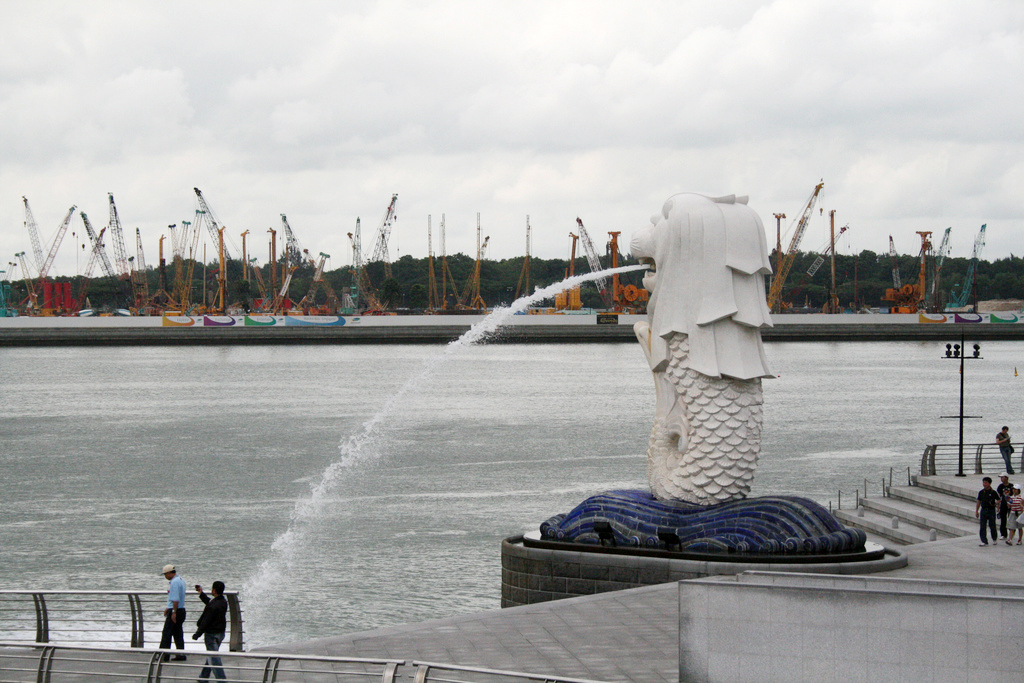
The brand of cosmopolitanism proposed by the government is very much like the multiculturalism enforced in Singapore. As Chong (2010b, pp. 514–515) rightly observes, cosmopolitanism as articulated by the government “is purged of political liberalism and deployed as modus vivendi for cultural and ethnic pluralism so as to prepare citizens for the presence of much needed foreign talent in the pursuit of economic growth”. This is similar to the limited definition of multiculturalism found in government discourse, that is to say, “cultural-ethnic differences should be played down in favour of social harmony and whereby no community should overstep its boundaries” (ibid).
As more “others” enter the country and become part of the Singapore community, this brand of cosmopolitanism is insufficient to create the adaptability and receptivity needed to navigate the changes and uncertainties brought on by globalisation. One thing Singaporeans and newcomers alike need to learn is how to stop thinking about the “other” in straitjacketed ethic identity terms. One way of establishing the ideal comfort zone as opposed to a mere contact zone is by increasing what Robert Putnam terms social capital.12 For Putnam, “the way you achieve a successfully diverse society is not to make everybody homogeneous. The challenge is not to make them like us; it is to have a new ‘us’”.13 His suggestion is “a national identity that is dynamic and ‘more encompassing’, not one that is fixed and immutable”.14
One way of getting both the people and the state comfortable with heading in this new direction would be to focus on building a Singaporean Singapore (which is more organic than for instance the enforced French assimilation).15 In this Singaporean Singapore, racial categories will no longer be needed to define and describe a Singaporean’s identity; a more inclusive rather than simply tolerant society would emerge, and a cosmopolitan outlook that would not just reluctantly accept outsiders, but instead embrace them as a natural way of life in today’s globalised world would exist. In other words, a cosmopolitan-infused nationalism would be the norm.
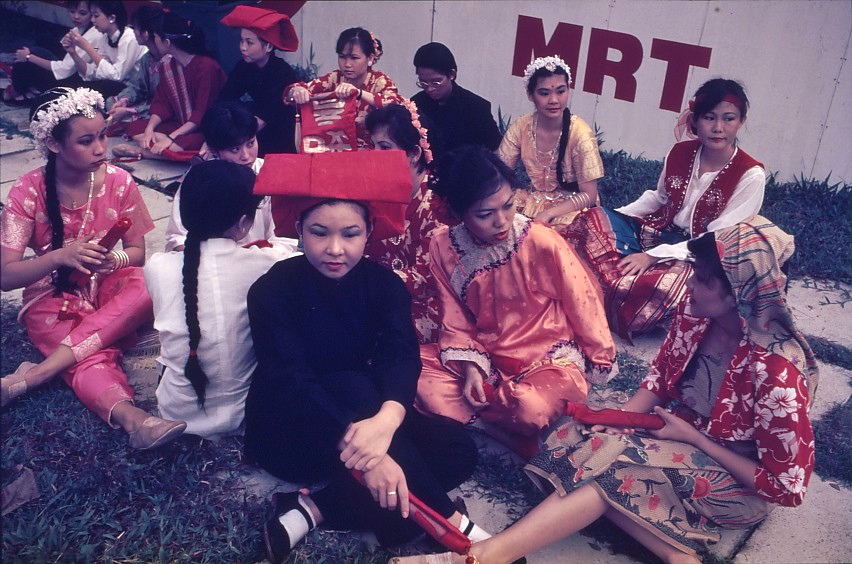
The notion of national identity is ever fluid, as constructed myths of imagined communities or worlds are constantly “in flux as they are renegotiated and reframed in ways to reemphasize a sense of national identity that will be compelling to younger generations” (Kluver & Weber, 2003, p. 375). In Singapore, as Minister Mentor Lee Kuan Yew and Senior Minister Goh Chok Tong acknowledge in a joint statement upon stepping down, “[a] younger generation, besides having a non-corrupt and meritocratic government and a high standard of living, wants to be more engaged in the decisions which affect them”.16
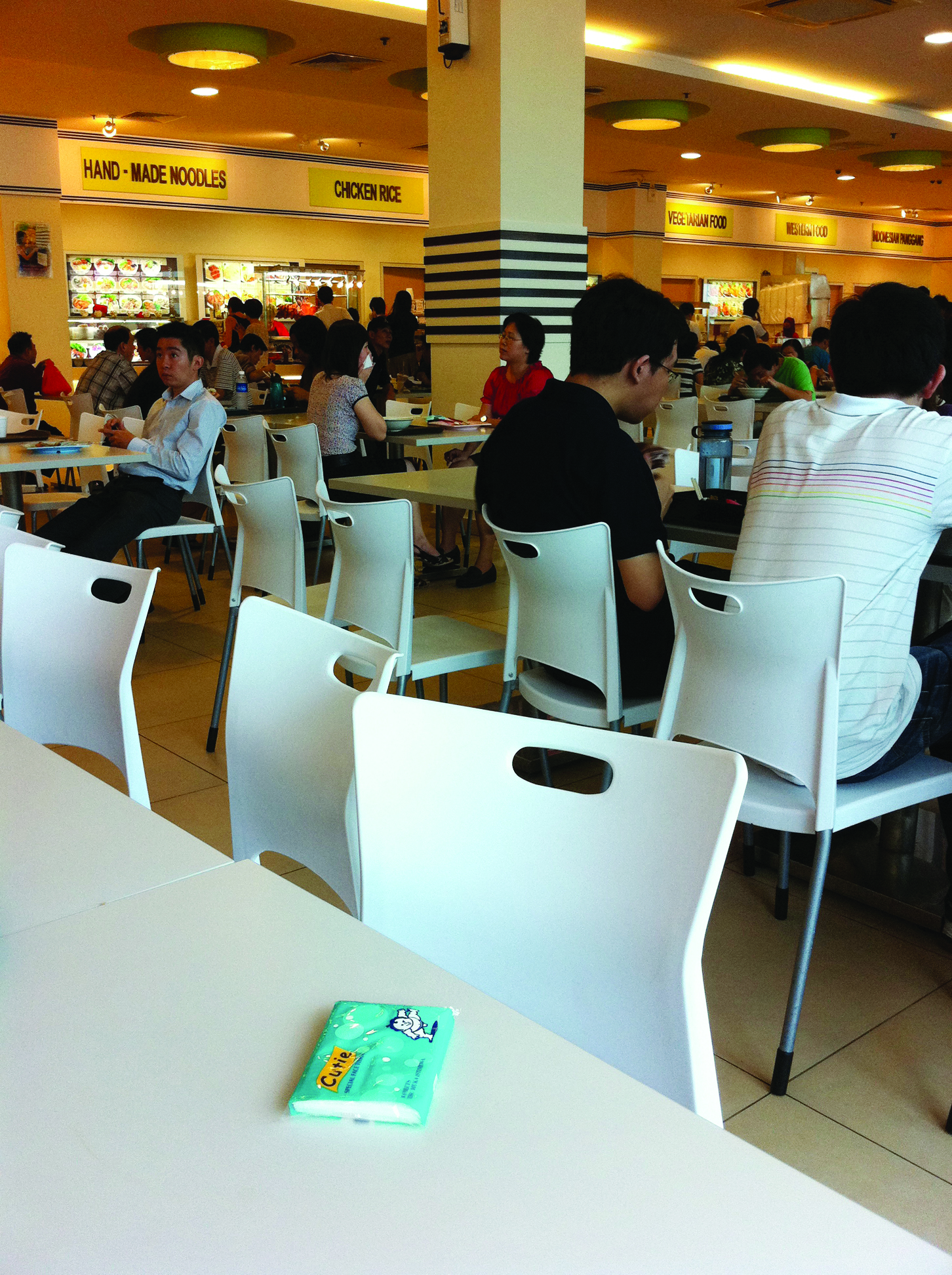
Singaporeans, especially the younger generation, have clearly indicated an interest in doing more than sitting at the sidelines as decisions on Singapore’s future are made. Can Singaporeans do without the need for ethnicity indication in identity cards, can they do away with quota systems in Housing and Development Board blocks and not gravitate towards ethnic enclaves; can they accept direction for Singapore. generation, have clearly indicated an interest in doing more than sitting at the sidelines as decisions on Singapore’s future are made. Can Singaporeans do without the need for ethnicity indication in identity cards? Can they do away with quota systems in HDB blocks and not gravitate towards ethnic enclaves? Can they accept the irrelevance of minority representation in Group Representation Constituencies? Can they appreciate the freedom to learn beyond one’s designated mother tongue? Perhaps now is the right time to put some thought into a sustainable and feasible direction for Singapore.
The author is grateful to Dr Norman Vasu, Assistant Professor and Deputy Head of the Centre of Excellence for National Security S. Rajaratnam School of International Studies, for reviewing the paper on his otherwise perfect holiday.
.jpg)
Associate Research Fellow
Centre of Excellence for National Security
S. Rajaratnam School of International Studies
Nanyang Technological University.
REFERENCES
Beck, U. (2006). The cosmopolitan vision. Cambridge: Polity Press.
Chong, T. (2010). Fluid nation: The perpetual “renovation” of nation and national identities in Singapore. In T. Chong (Ed.), Management of success: Singapore revisited (pp. 504–520). Singapore: Institute of Southeast Asian Studies. (Call no.: RSING 959.57 MAN)
Chong, T. (Ed.). (2010). Introduction: The role of success in Singapore’s national identity. In T. Chong (Ed.), Management of success: Singapore revisited (pp. 1–18). Singapore: Institute of Southeast Asian Studies. (Call no.: RSING 959.57 MAN)
Chua, B.H, (1995). Culture, multiracialism and national identity in Singapore. (Department of Sociology working papers, no. 125). Singapore: National University of Singapore. (Call no.: RSING 959.57 CHU)
Kluver, R., & Weber, I. (2003, October). Patriotism and the limits of globalization: Renegotiating citizenship in Singapore. Journal of Communication Inquiry, 27 (4), 371–388.
Koh, A. (2003, October). Global flows of foreign talent: Identity anxieties in Singapore’s ethnoscape. Sojourn, 18 (2), 230–256. Retrieved from JSTOR via NLB’s eResources website.
Kong, L. (1999, June). Globalisation and Singaporean transmigration: Re-imagining and negotiating national identity. Political Geography, 18 (5), 563–589.
Low, L. (2002). Globalisation and the political economy of Singapore’s policy on foreign talent and high skills. Journal of Education and Work, 15 (4), 409–425. Retrieved from Taylor & Francis online website.
Quah, J.S.T. (2000). Globalization and Singapore’s search for nationhood. In L. Suryadinata (Ed.), Nationalism and globalization: East and West (pp. 71–101). Singapore: Institute of Southeast Asian Studies. (Call no.: RSING 320.54 NAT)
Tan, E.K.B. (2003, September). Re-engaging Chineseness: Political, economic and cultural imperatives of nation-building in Singapore. The China Quarterly, (175), 751–774. Retrieved from JSTOR via NLB’s eResources website.
Tan, J. (2008). Pulling together amid globalization: National education in Singapore schools. In P.D. Hershock, M. Mason & J.N. Hawkins (Eds.), Changing education: Leadership innovation and development in a globalizing Asia Pacific (pp. 183–197). Hong Kong: Comparative Education Research Centre. (Not available in NLB holdings)
Tennesson, S., & Antlov, H. (Eds.). (1996). Asia in theories of nationalism and national identity. In Asian forms of the nation (pp. 1–39). Surrey: Curzon Press. (Call no.: RSING 322.42095 ASI)
Velayutham, S. (2007). Responding to globalization: Nation, culture and identity in Singapore. Singapore: Institute of Southeast Asian Studies. (Call no.: RSING 305.80095957 VEL)
Yap, M.T. (1999, April). The Singapore state’s response to migration. Sojourn, 14 (1), 198–211. Retrieved from JSTOR via NLB’s eResources website.
Yeoh, B.S.A. (2004, November). Cosmopolitan and its exclusions in Singapore. Urban Studies, 41 (12), 2431–2445. Retrieved from JSTOR via NLB’s eResources website.
Yeoh, B.S.A., & Huang, S. (2004). “Foreign talent” in our midst: New challenges to sense of community and ethnic relations in Singapore. In Lai Ah Eng (Ed.), Beyond rituals and riots: Ethnic pluralism and social cohesion in Singapore (pp. 316–338). Singapore: Eastern Universities Press. (Call no.: RSING 305.80095957 BEY)
NOTES
-
Shahanaaz, H. (2011, May 3). S’poreans claim influx of foreigners hampering their livelihood. The Star. ↩
-
Goh, C.T. (1997, August 24). National Day rally speech 1997 – global city, best home. Retrieved from http://www.moe.gov.sg/media/speeches/1997/240897.htm ↩
-
According to the Singapore 21 report, “The Singaporean of the 21st century is a cosmopolitan Singaporean, one who is familiar with global trends and lifestyles and feels comfortable working and living in Singapore as well as overseas”, hence Singaporeans need to be “world ready”, with the ability to “plug-and-play with confidence in the global economy”. ↩
-
Singapore is ranked the most competitive country in the world and also considered by foreign talent to be Asia’s best country to work in, according to the “IMD World Competitiveness Yearbook 2010”; the “Quality of Living Worldwide City Rankings, Mercer Survey, June 2010” ranks Singapore as the best place in Asia to live, work and play. For other related rankings, refer to the Singapore Economic Development Board website. ↩
-
These “introverted forms of nationalism which oppose the ‘invasion’ of the global world by turning inwards” see those involved develop a “conscious resistance to the cosmopolization of their life-worlds, to globalization and globalisers who are perceived as threatening the local form of life of the ‘natives’” (Beck, 2006, p. 4) ↩
-
Putnam shared that social capital is “the value that arises when individuals learn to trust one another, make credible commitments, and engage in cooperative activities, such as giving to charity, joining civic and political groups”. His research had found that immigration and ethnic diversity had the impact of reducing social capital. However, Putnam argues that this problem can be fixed with “bridging social capital” – basically the idea of fostering social capital between different groups. Li, X., & Putnam, R. (2011, March 31). S’pore can’t afford to stop building social capital. The Straits Times, p. 31. ↩
-
A strong advocate of a non-ethnic concept of a Singaporean Singapore, PAP co-founder S. Rajaratnam cautioned that with the country’s search for roots drifting towards a search to strengthen Chinese, Indian, Malay and Eurasian identity, “Singaporean too could go the way of the many now disintegrating nations if the legitimate search for roots is not directed towards the strengthening of our proclaimed goal of a Singaporean Singapore”. Whatever happened to Singaporean Singapore? (1990, March 3). The Straits Times, p. 28. ↩
-
The shared values include: (1) Nation before community and society above self; (2) Family as the basic unit of society; (3) Community support and respect for the individual; (4) Consensus, not conflict; and (5) Racial and religious harmony. ↩
-
In the 1997 National Day Rally Speech, then Prime Minister Goh Chok Tong noted that “[f]or cosmopolitan Singapore to work, however, it must be anchored by the values of our three main communities – Malay, Indian and Chinese. Otherwise it will drift”. ↩
-
Don’t base national identity on speaking singlish. (2007, September 23). The Straits Times, p. 6; Nirmala, M. (2002, August 10). Food not the way to forge strong identity. The Straits Times, p. 4. ↩
-
Wong, K.S. (2011, January 18). Making Singaporeans feel this is home in a global city. The Straits Times, p. 21. ↩
-
Li & Putnam, The Straits Times, 31 Mar 2011, p. 31. ↩
-
Li & Putnam, The Straits Times, 31 Mar 2011, p. 31. ↩
-
Li & Putnam, The Straits Times, 31 Mar 2011, p. 31. ↩
-
Immigrants to France are expected to assimilate French national identity and relegate all other identities to the private sphere. ↩
-
Joint statement by SM Goh Chok Tong and MM Lee Kuan Yew. (2011, May 14). Today. ↩

